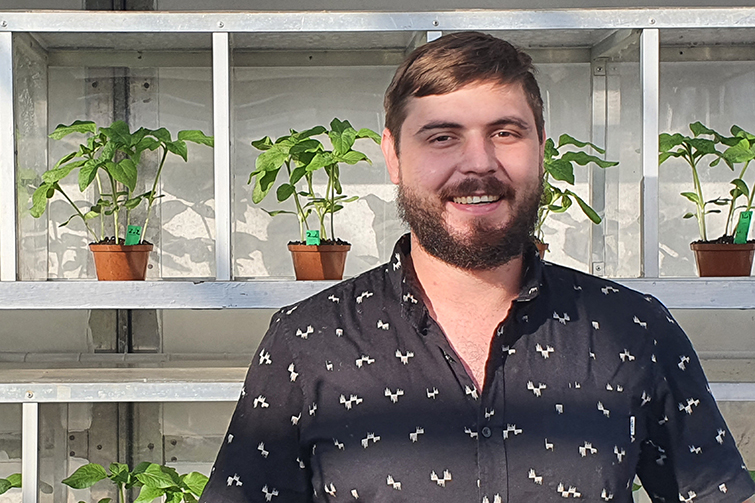12 May 2021
|
Story Leonie Bolleurs
|
Photo Supplied
 Wilku Meyer is the co-recipient of the Junior Captain Scott Memorial Medal for Plant Sciences, awarded every second year by the South African Academy for Science and Arts for the best MSc dissertation awarded at a South African university.
Wilku Meyer is the co-recipient of the Junior Captain Scott Memorial Medal for Plant Sciences, awarded every second year by the South African Academy for Science and Arts for the best MSc dissertation awarded at a South African university.
In 2016, sunflower rust was very prominent, causing trouble in the agricultural industry. With the latest information on this topic published as far back as the 1990s,
Wilku Meyer, PhD Botany student at the University of the Free State (UFS), saw the gap in research and decided to make sunflower rust the focus of his master’s dissertation.
“After seeing the work researchers are doing in the
Department of Plant Sciences at the UFS and how it can be applied, it was reassuring to know that the work you are doing can, in addition to broadening your own horizons, also help other people,” says Meyer.
Not only will his research one day possibly make a positive difference in the agriculture sector, but he has also received acknowledgement for this work from the prestigious body, the
South African Academy for Science and Arts.
Best MSc dissertation in Plant Sciences
With his dissertation: ‘Phenotypic and genotypic variation of Puccinia helianthi in South Africa’, Meyer is the co-recipient of the Junior Captain Scott Memorial Medal for Plant Sciences, awarded every second year by the South African Academy for Science and Arts for the best MSc dissertation awarded at a South African university. Ruan van der Nest from the Stellenbosch University Department of Agronomy shared the award with him.
The focus of his dissertation was to see how many different races of the Puccinia helianthi fungus are responsible for sunflower rust. He explains: “I followed two approaches to this, namely the phenotypic approach whereby specific sunflower lines are infected with spores of different Puccinia helianthi isolates collected from sunflower fields in South Africa. With the second approach, the genotypic approach, I looked at the DNA of collected rust samples and compared them with each other.”
In the end, he was able to identify six races in total that were spread across four main genetic groups.
Meyer did not settle for subpar results and kept going, no matter how much work it was, or the time required. He put all his time and effort into this study. He believes that the guidance of his supervisors and the support of his family and friends also helped with this big achievement.
Hard-working, dependable, and mature researcher
Prof Botma Visser (Botany), one of Meyer’s supervisors during his master’s study, describes him as hard-working, dependable, and a mature researcher. According to Prof Visser, the one attribute that will benefit him with his PhD, is his computer skills, especially in the field of Bioinformatics. “This is becoming an important skill set for postgraduate students, whereby huge datasets generated with the newest DNA sequencing technologies are analysed to provide next-generation results and understanding the interactions between a plant and a pathogen.”
“Finally, and maybe his best quality, is that he really loves what he is currently doing – from the practical hands-on work in the greenhouse, to the laboratory and computer-based molecular analyses of the plant pathogen,” adds Prof Visser.
Meyer, in response to the award from the South African Academy for Science and Arts, says it is an honour. “I'm very grateful that all the time and effort is being recognised. It is a confirmation that I'm doing what I should be doing.”
He started his PhD study this year (2021), again under the supervision of Prof Botma Visser and
Prof Willem Boshoff (Plant Pathology).